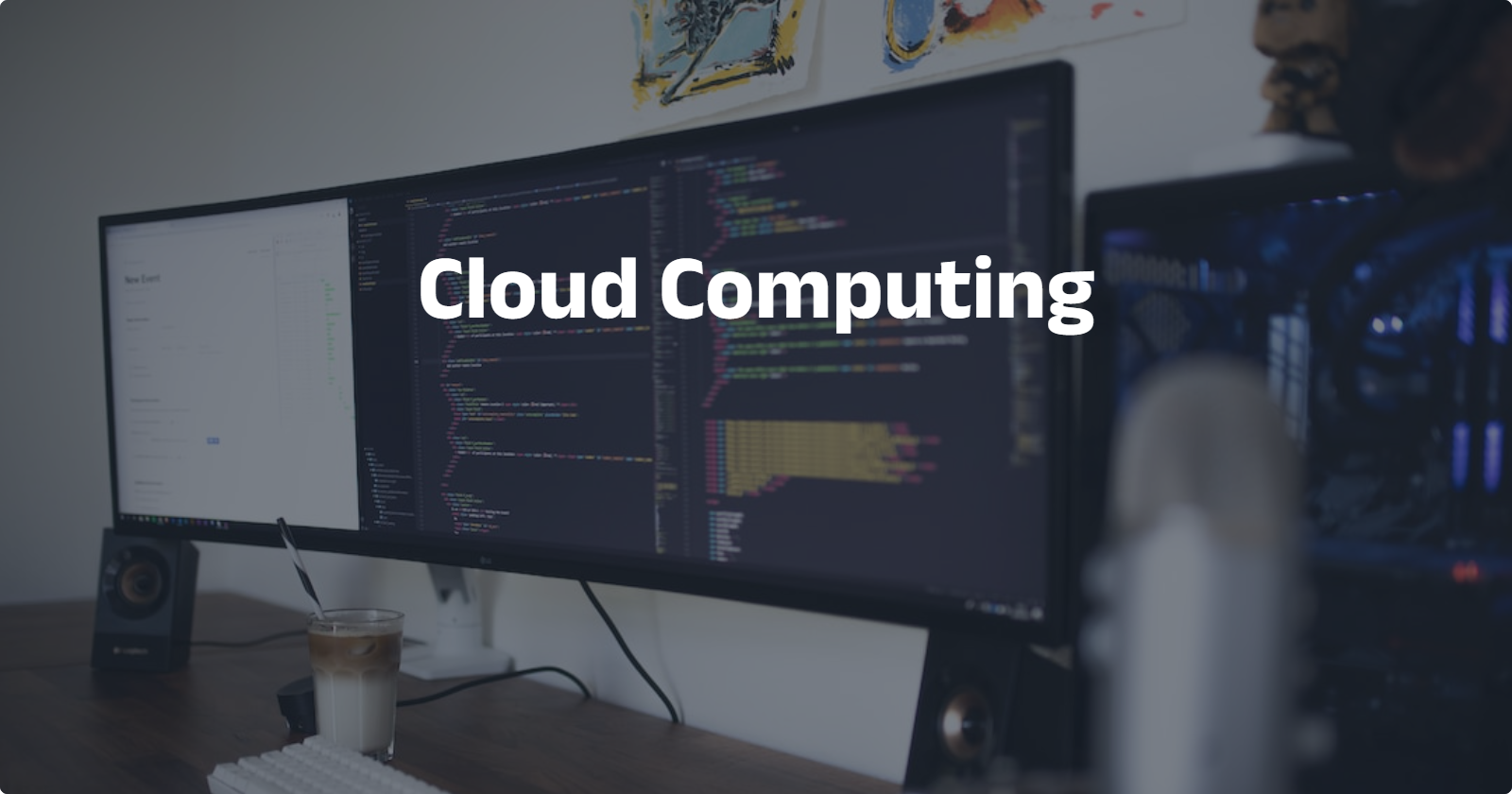Benefits and Risks of Cloud Computing: A Beginner's Guide
 CHIBUYE KUNDA
CHIBUYE KUNDATable of contents
- What is cloud computing?
- Benefits of Cloud Computing
- Cost Savings
- Scalability
- Accessibility
- Risks and Challenges
- Security Concerns
- Privacy Issues
- Downtimes
- Types of Cloud Computing
- Infrastructure As a Service(IaaS)
- Platform as a service (PaaS)
- Software As a Service(SaaS)
- Serverless Computing
- Selecting a Cloud Service Provider
- Service Offerings
- Pricing
- Performance
- Data Centers and Regions
- Compliance and Security
- Support and SLAs
- Vendor Lock-In
- User Experience
- Reliability and Uptime
- Cost Management Tools
- Case Studies
- Conclusion
- Resources and References

This article describes the benefits and risks associated with cloud computing. This article doesn’t describe in detail the kinds of cloud services provided by cloud service providers.
This article is aimed at the following audiences:
Businesses of all sizes
Startups
Developers and IT professionals
Individual consumers
Government and public sector
Educational institutions
Nonprofit organizations
E-commerce and Retail
Healthcare industry
Media and entertainment
Research and scientific communities
Internet of Things (IoT) developers
What is cloud computing?
Cloud computing is the on-demand delivery and availability of computing resources over the internet on a pay-as-you-go basis.
The computing resources include:
Computing power
Storage
Databases
Data Centers
Servers
Networking
Analytics
There was a time when every household, town, farm or village had its own water. Today, shared public utilities give us access to clean water by simply turning on the tap; Cloud computing works similarly. Just like water from the tap in your kitchen, Cloud computing services can be turned on or off quickly as needed. Like at the water company, there is a team of dedicated professionals making sure the service provided is safe, secure and available on a 24/7 basis. When the tap isn't on, not only are you saving water, but you aren't paying for resources you don't currently need.
Benefits of Cloud Computing
Cost Savings
Cloud computing optimizes IT costs by allowing you to trade fixed expenses for variable expenses. The fixed expenses of hardware, software and setting up and running onsite data centers—the racks of servers, the round-the-clock electricity for power and cooling and the experts for managing the infrastructure add up quickly.
With variable expenses, you only pay for IT as you consume it. Additionally, the variable expenses are much lower because of the economies of scale.
Scalability
Cloud computing allows you to scale computing resources up or down to instantly grow and shrink capacity as business needs fluctuate.
Scalability is achieved without investing in physical infrastructure or over-provision of resources to support the peak of business activities in an organization.
Accessibility
Cloud computing enables you to make data available anywhere you are, anytime you need it. Instead of being tied to a location or specific device, people can access data from anywhere in the world from any device—as long as they have an internet connection. This accessibility makes remote work convenient.
Risks and Challenges
Security Concerns
Using cloud services comes with security concerns that have to be addressed.
The following are the common security concerns:
There is a significant risk of unauthorized access to sensitive data. Weakness of access controls and application vulnerabilities may lead to a data breach. If it is not sufficiently secured, data may be exposed by the common nature of cloud infrastructure to other users.
Unauthorized access to Cloud resources can be facilitated by inadequately managed user identities and access controls. Strong authentication methods and the use of less privileged access policies are essential.
Data needs to be encrypted at all times when the data is in transit or not. There is a risk that sensitive information could be exposed by weak encryption.
Accidents, hardware failures or other unforeseeable events can cause data stored in a cloud to be deleted. To mitigate this risk, regular backup and data redundancy is required.
Privacy Issues
The fact that cloud services have a common and distant nature in which data is kept and processed on public infrastructure or managed by third parties can result in privacy issues concerning cloud computing.
Here's how privacy concerns may become visible in cloud computing:
Data centers are frequently located in different countries and regions. As a result, it may be hard to determine which legal jurisdiction governs the data. The laws on data protection may differ from one country to the next, which can affect the privacy rights of individuals and organizations.
If the cloud provider logs and watches user activities in a way that does not require user consent, privacy concerns may arise. What information the provider collects and what purpose it serves is important to understand.
The privacy policies, terms of service and procedures for data processing are the responsibility of cloud providers. To comply with their privacy requirements, users should have these policies reviewed and understood.
Downtimes
Cloud computing systems are internet-based, technical problems such as reboots, network outages and downtimes are always an unfortunate possibility and can occur for any reason. These technical problems can incapacitate business operations and processes. However, strategies to mitigate downtimes exist.
Types of Cloud Computing
The four broad categories of cloud computing include infrastructure as a service (IaaS), platform as a service (PaaS), serverless and software as a service (SaaS). These types of cloud computing build on top of one another, they are sometimes called the cloud computing "stack".

Figure 1. Shared responsibility In azure
Infrastructure As a Service(IaaS)
With infrastructure as a service**(IaaS)**, you rent the basic building blocks of IT infrastructure—servers and virtual machines (VMs), storage and networks from a cloud provider on a pay-as-you-go basis.
IaaS gives you a level of flexibility and management control over your IT resources. It is similar to the existing IT resources with which many IT departments and developers are familiar.
Platform as a service (PaaS)
PaaS refers to cloud computing services that supply an on-demand environment for developing, testing, delivering, and managing software applications. This removes the need for you to manage underlying infrastructure such as servers, storage, networks, and databases needed for development.
This helps you be more efficient as you don’t need to worry about resource procurement, capacity planning, software maintenance, patching, or any of the other undifferentiated heavy lifting involved in running your application.
Software As a Service(SaaS)
SaaS is a type of cloud computing that delivers an end-user software application(such as web-based email) over the internet, on-demand and typically on a subscription basis. Users connect to the application over the internet, usually with a web browser on their phone, tablet, or PC.
You only need to think about how you will use that particular software. you don’t have to think about how the service is maintained or how the underlying infrastructure is managed like software upgrades and security patching.
Serverless Computing
Overlapping with PaaS, serverless focuses on building app functionality without spending time continually managing the servers and infrastructure required to do so. The cloud provider handles the setup, capacity planning, and server management for you.
Serverless architectures are highly scalable and event-driven, only using resources when a specific function or trigger occurs.
Selecting a Cloud Service Provider
Selecting a cloud service provider is an important decision. It is important to evaluate your requirements before you choose a service provider because they offer various services for different needs.
In selecting a cloud service provider, among the three top providers Amazon Web Services (AWS), Microsoft Azure and Google Cloud Platform (GCP).
You should take into account these factors:
Service Offerings
AWS has the widest range of services, covering computing, storage, databases, machine learning, analytics, IoT, and more.
Microsoft Azure offers a comprehensive suite of services, including Windows-based services and strong integration with Microsoft products like Office 365.
Google Cloud is known for its strengths in data analytics, machine learning, and container orchestration with Kubernetes.
Pricing
AWS provides a variety of pricing models, including pay-as-you-go, reserved instances, and spot instances.
Microsoft Azure offers competitive pricing and often includes hybrid cloud options for businesses that require on-premises and cloud solutions
Google Cloud offers per-second billing and sustained-use discounts, making it cost-effective for some workloads.
Performance
Assess the performance levels required for your applications and workloads and compare the performance metrics offered by each provider.
Data Centers and Regions
Consider the global presence and availability of data centers and regions to ensure your chosen provider can meet your geographical requirements.
Compliance and Security
Check if the provider complies with industry-specific regulations and security standards relevant to your business.
Support and SLAs
Review the support options and service level agreements (SLAs) to ensure they meet your organization's needs.
Vendor Lock-In
Consider the potential for vendor lock-in and evaluate strategies for minimizing it, such as using multi-cloud or hybrid-cloud solutions.
User Experience
Evaluate the user interface, management tools, and ease of use of each provider's platform.
Reliability and Uptime
Check the historical uptime and reliability of each provider's services.
Cost Management Tools
Assess the availability of cost management and optimization tools to help control cloud spending.
Case Studies
These are the real-world case studies of organizations benefiting from cloud computing. AWS case studies, Azure customer stories and GCP customers.
Conclusion
In this article, we have learned what cloud computing is, the benefits of cloud computing, risks and challenges, types of cloud computing and factors to consider to selecting a cloud service provider.
Resources and References
You can check out some of the resources listed below to learn more about cloud computing.
Subscribe to my newsletter
Read articles from CHIBUYE KUNDA directly inside your inbox. Subscribe to the newsletter, and don't miss out.
Written by
